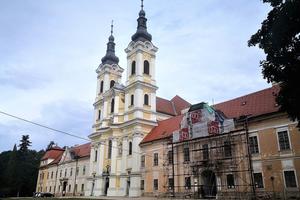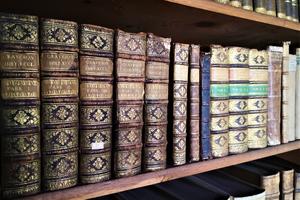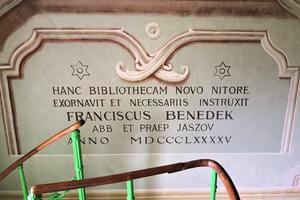Before the globe became a common teaching aid, only people from the highest social class could own this former symbol of power and control over territories.
Moroever, its design required precise technical and artistic work, and the high price corresponded to the requirements. Along with advancing technology and more detailed discoveries, globes became more accessible during the 17th and 18th centuries and gradually entered schools as compulsory equipment.Moroever, its design required precise technical and artistic work, and the high price corresponded to the requirements. Along with advancing technology and more detailed discoveries, globes became more accessible during the 17th and 18th centuries and gradually entered schools as compulsory equipment.
Around that time, the Jasov Premonstratensians in the Košice Region probably obtained their first scale models of the Earth as well. One historical specimen has been preserved to this day, but there is no detailed information about it.
The historical globe from Jasov is exactly 150 years old. Although, according to period photographs, it was not concealed from the world, it had long escaped the attention of experts.
Jasov globe a national monument
As the historian and librarian of the monastery library in Jasov Veronika Timuľáková states in one of her articles, this globe is not mentioned in the 1964 list of old globes in Czechoslovakia, the 1967 list of Slovak monuments, nor in the 1969 list of movable monuments of the East Slovak Region.
Things changed 20 years later, in 1985, when the Jasov globe became the first ever historical globe in Slovakia with the status of a movable national cultural monument.
"I think it was the initiative of preservationists who came here for an inspection in 1984. They were to evaluate what objects deserved special protection," Timuľáková said.
It was at a time when no one expected communism to fall and the monks to return. Apparently, Timuľáková added, they realised that it would be good to protect the globe as well. For more than two decades, it was the only protected historical globe in Slovakia.
In 2011, nevertheless, the same status was granted to an entire set of nine historical globes preserved in the historical library of the Bratislava evangelical grammar school. Since the set of nine globes is considered to be a monument as a whole, the Jasov globe still remains unique.
Oldest globe unprotected
Although the Jasov globe is a cultural monument, it is not the oldest historical model of the Earth in Slovakia. The oldest one is located in the Danube Museum in Komárno, Nitra Region, the historian noted.
This globe was made in 1609 in Amsterdam by the Dutch cartographer Willem Janszoon Blaeu, and it is one of the so-called celestial globes.
Rare models of the Earth can also be found in the collections of several museums, including Betliar and Orava Castle.
"There are also globes from the 18th century, but these do not have the status of a cultural monument as they are museum artefacts," the historian said.
Therefore it is remarkable, in her opinion, that the Jasov globe, which dates back to the second half of the 19th century, has the status of a national cultural monument.
Zero meridian runs through Farro
Despite its age, the Jasov globe is still in good condition. Minor damage, which would require repair, is visible on it, but otherwise it is fully functional and well preserved.
"The globe is mounted on a wooden three-legged pedestal with a twelve-sided horizontal circle with cardinal directions, the months and twelve signs of the zodiac," Timuľáková said.
She also mentioned the zero meridian does not pass through the British city of Greenwich, as we know it today, but through the Canary Island of Farro. In addition, a part of Antarctica that was not yet discovered at the time is not pictured on the Jasov globe.
The globe came into the possession of the Premonstratensian Order after 1871 from the renowned Czech workshop of Jan Felkl, which was based near Prague. Felkl's products had the status of official school supplies of the Austro-Hungarian Ministry of Education, so the globes from his workshop were distributed to schools and other institutions across Hungary.
Since the monks in Jasov managed four grammar schools from the beginning of the 19th century, they also received some.
"They probably had to get some before that, around 1840, when the first Hungarian globe pairs (Earth and celestial models) were made," the historian said. "They were distributed to Hungarian high schools as a gift."
But they have not been preserved, Timuľáková noted.
Probably the only one
The globes made by Felkl were once considered the best. Later, however, they were criticised by experts for several inaccuracies on the map.
However, the mistake was allegedly on the part of cartographer Pavel Gönczy, who had provided the workshop with the wrong materials. In addition, a few decades later, they lost their relevance and their use in schools was banned in 1908.
"Despite the loss of their practical purpose, Felkl's globes have remained, thanks to their high-quality technical and artistic design, not only a decorative element of interiors, but also, with increasing age, a collector's item with historical value," said Timuľáková.
Even though Felkl's workshop managed to distribute several of its products to Hungary until the aforementioned ban, according to the historian, there are probably no other globes from this workshop in Slovakia.
"Maybe collectors have smaller versions hidden somewhere in private collections," Timuľáková said.
There is speculation, she maintained, that a similar globe to the Jasov one had been kept in the monastery in Leles, Košice Region, before it got lost.
© Korzár
Author: Daniela Marcinová


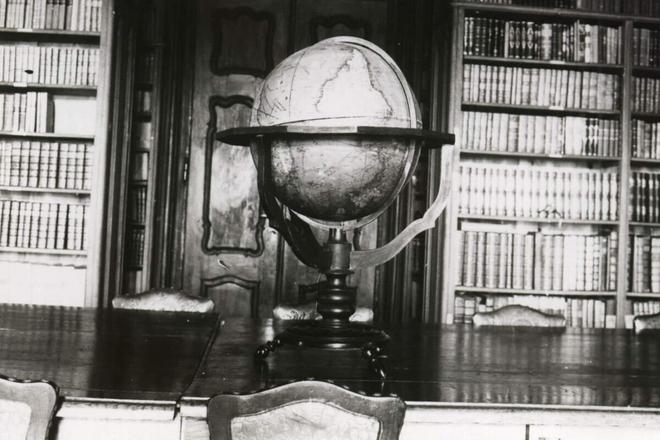 The Jasov globe as portrayed in a 1984 photo. (source: Premonstratensian Order - Jasov Abbey, Collection of Photographs)
The Jasov globe as portrayed in a 1984 photo. (source: Premonstratensian Order - Jasov Abbey, Collection of Photographs)
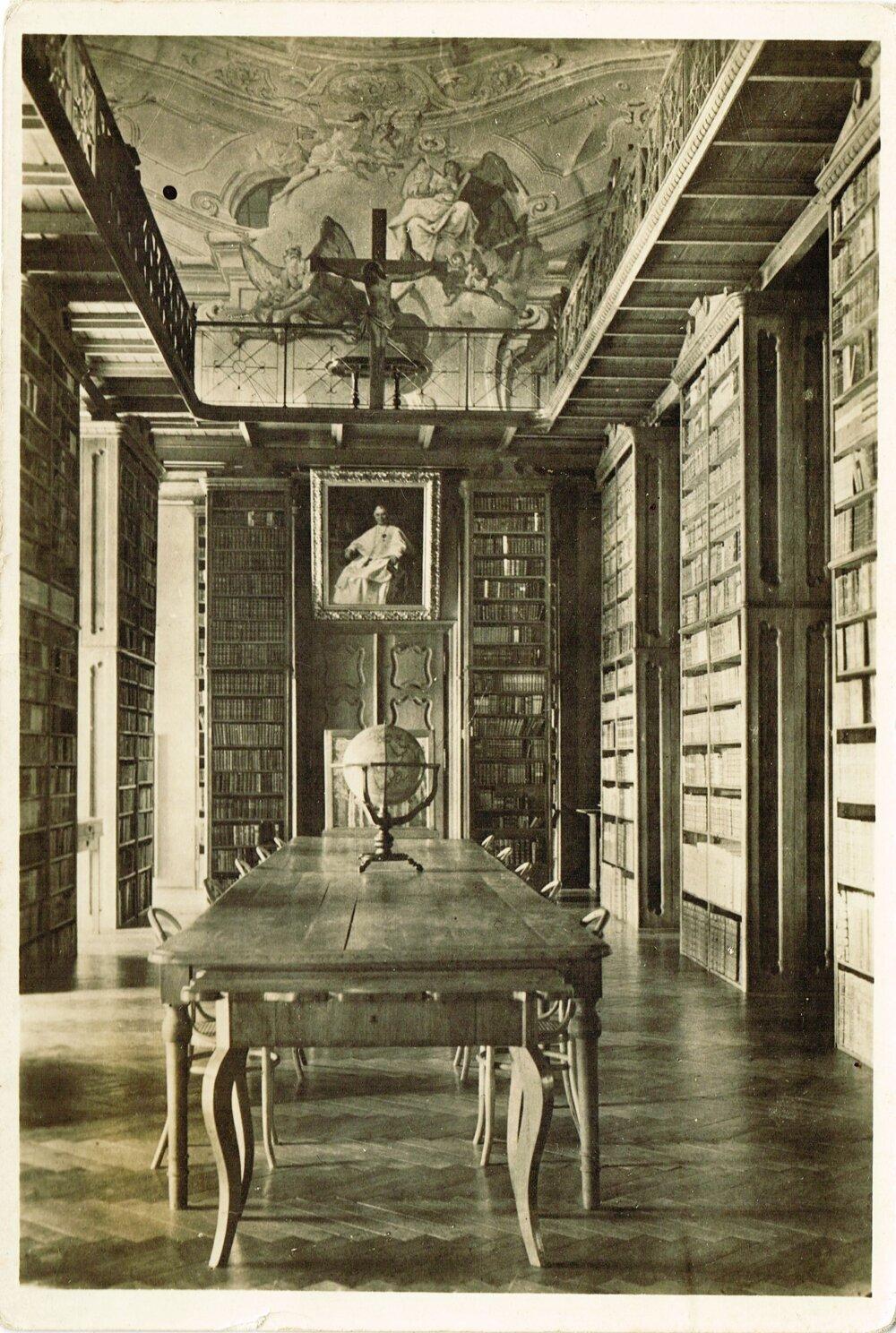 The Jasov globe in the 1920s and 1930s. (source: Vavrinec Tibor Špilka, OPraem. - Premonstratensian Order - Jasov Abbey, Collection of Photographs)
The Jasov globe in the 1920s and 1930s. (source: Vavrinec Tibor Špilka, OPraem. - Premonstratensian Order - Jasov Abbey, Collection of Photographs)
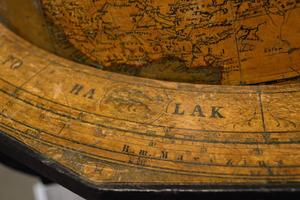

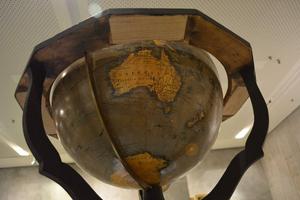
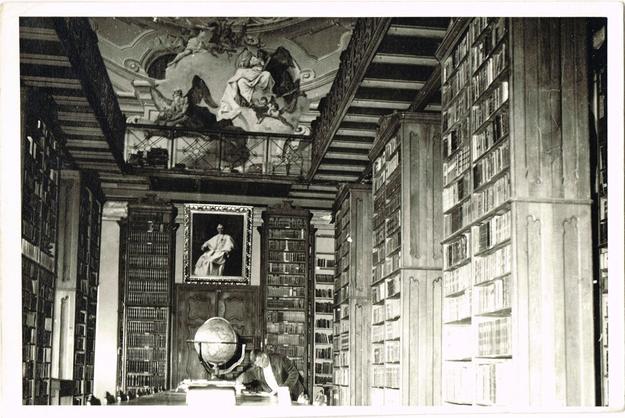 The Jasov globe in the monastery library. (source: Premonstratensian Order - Jasov Abbey, Collection of Photographs)
The Jasov globe in the monastery library. (source: Premonstratensian Order - Jasov Abbey, Collection of Photographs)
